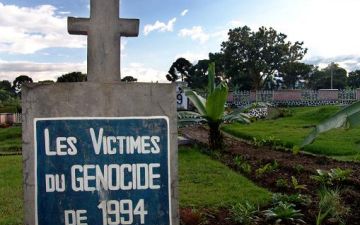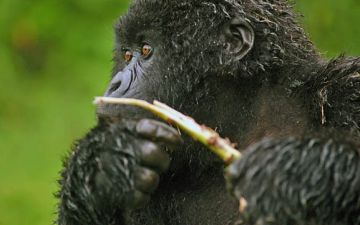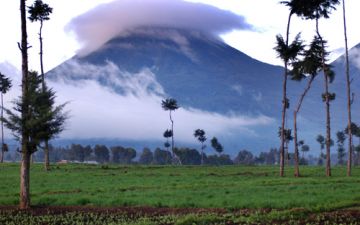Reporter Stephanie Hanes and photographer Jeffrey Barbee traveled around Rwanda to look at the lasting impact of choices made about the environment during conflict. The Rwandan genocide of 1994 left an estimated 800,000 people dead, and helped destabilized central Africa. In the face of this human catastrophe, few people focused on environmental conservation. Yet more than a decade years later, what happened to the Rwanda's environment during that crisis is significantly affecting the country's recovery efforts. Reporter Stephanie Hanes and photographer Jeffrey Barbee traveled around Rwanda to look at the lasting impact of choices made about the environment during conflict. Their reports have appeared in the Baltimore Sun, Christian Science Monitor, Concord Monitor and San Francisco Chronicle, as well as on the PBS show Foreign Exchange with Fareed Zakaria.
What Follows Genocide?
We stopped our car along the main road that snakes from Kigali, Rwanda's capital, to the country's western region. We were heading to the volcanoes that soar along the northwest border for a story about mountain gorillas and what has happened to their habitat. But the light was good now, streaking through the rainy season's ever-present clouds, and the cameraman I was traveling with wanted to shoot.
Mountain Gorillas Managed to Survive Genocide
(09-10) 04:00 PDT Ruhengeri, Rwanda -- The mud, at first, is brutal. It splashes your pants and sloshes down your socks and seems to fling itself at you from the thick bamboo forest. It suctions your boots as you strain up what shouldn't really be called a path, and mocks you for moving so slowly, especially compared to the Rwandan guides who seem to glide through the forest.
Rwanda Reaps Rewards of Wartime Nature Conservation
On the steep, misty slopes of the Sabinyo volcano, far above the green rectangles of sorghum fields that press against the Parc National des Volcans, a family of mountain gorillas is frolicking.
As the huge silverback yawns, a small group of camera-toting tourists - each of whom has paid Rwanda's park system $375 to see this scene - click away. "It's amazing!" one woman exclaims.




